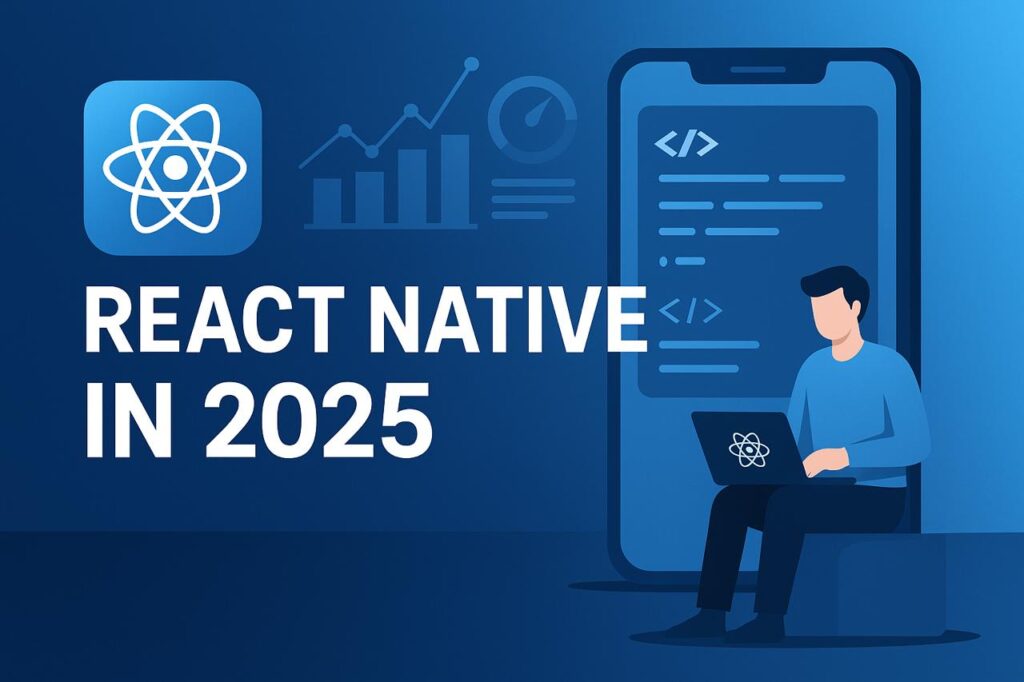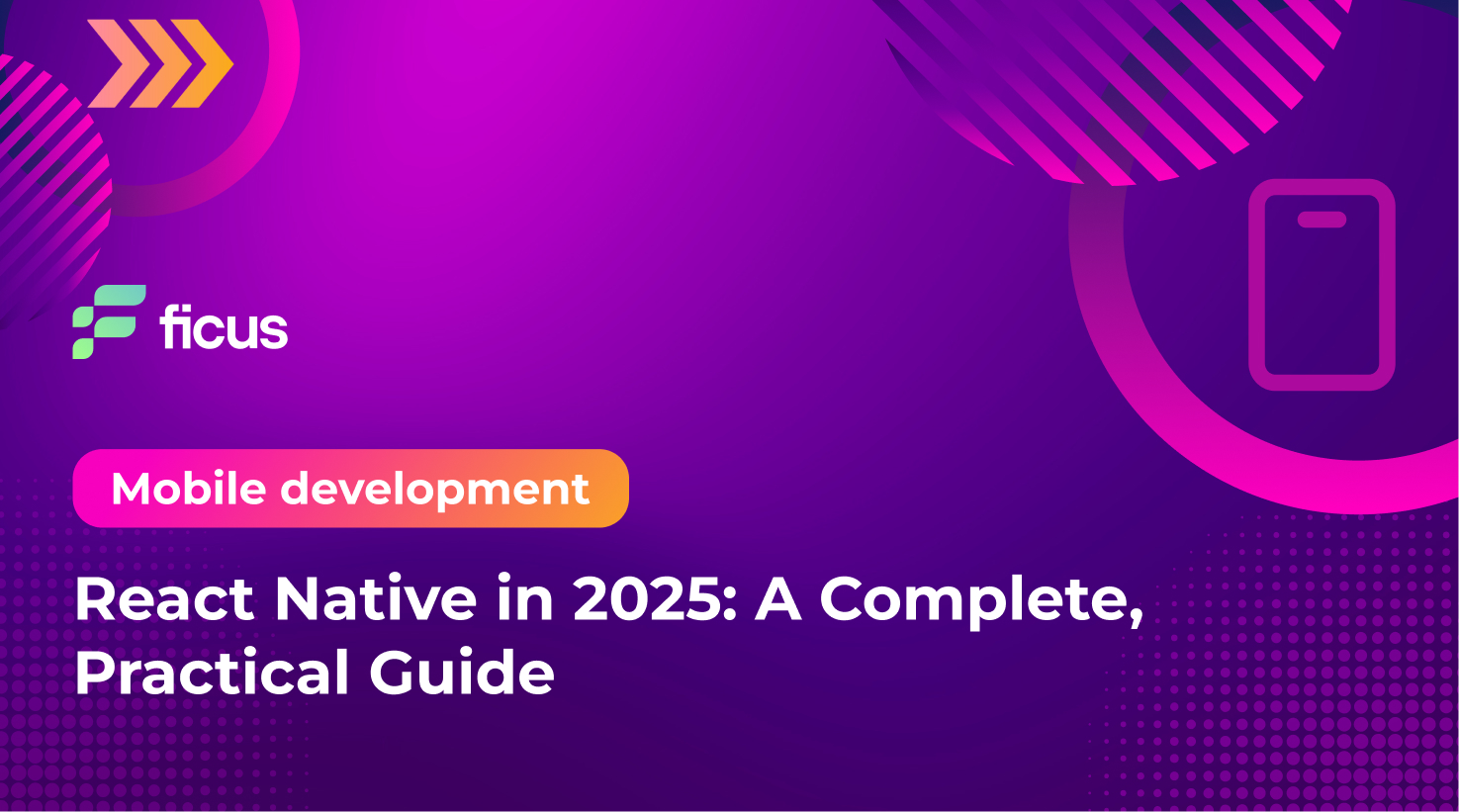In 2025, React Native (RN) has moved from being a “promising” framework to a predictable choice for production. The New Architecture — combining JSI, TurboModules, and Fabric — is now the default in most new applications. Hermes has become the standard JavaScript engine, while the Expo and React Navigation ecosystem is stable enough to serve even highly regulated or enterprise-level workloads. This doesn’t mean React Native has replaced every native use case; high-performance media, AR, or immediate access to brand-new OS APIs still require native development. But for the majority of product surfaces — feeds, forms, dashboards, commerce flows, messaging — RN delivers a native user experience with a single TypeScript codebase and iteration speed that few alternatives can match.
- RN renders real platform UI — no WebViews — and typically reuses 60–95% of code across iOS/Android.
- The New Architecture reduces “bridge” overhead; Hermes + Codegen improve startup and memory usage.
- RN’s core advantage is velocity: TypeScript, Fast Refresh, mature libraries, Expo tooling, and safe OTA.
What React Native Means in 2025
React Native allows teams to build mobile applications in React and TypeScript while rendering true native UI components. Unlike hybrid approaches that rely on WebViews, RN translates the JSX tree into a platform view tree through Fabric. Device features are exposed as TurboModules, with types automatically generated by Codegen, while the JSI layer replaces the old JSON bridge with a much faster C++ interface.

The impact is visible in real-world performance: shorter startup times, fewer dropped frames under stress, and better memory behavior. These gains are real but fragile; naïve coding patterns, such as excessive cross-boundary calls or unbounded re-renders, can erode them quickly.
Architecture That Actually Ships
Every React Native app still has two worlds: the JavaScript runtime, usually Hermes, and the native world, which is UIKit or AppKit on Apple devices and Views or Compose on Android. Fabric manages layout and commits between these two layers, while TurboModules provide typed APIs to expose native functionality. Teams that succeed with React Native keep the interaction between these layers coarse-grained, avoiding dozens of small back-and-forth calls in favor of structured operations.
From a UI perspective, RN respects platform conventions. Native typography, accessibility settings, and gestures feel natural because they are rendered by the platform itself rather than redrawn. For theming, developers rely on tokens and styles, and for complex animation they use libraries like Reanimated and Gesture Handler, which allow logic to run off the JavaScript thread to prevent stutter. In terms of data handling, the ecosystem in 2025 has largely standardized around TanStack Query for REST and Apollo or urql for GraphQL. Offline-first applications use SQLite, WatermelonDB, or Realm, and treat synchronization as a full product feature rather than a background process.
Performance as an Operating Model
React Native can be fast, but only if performance is treated as a budget rather than a vague aspiration. Teams establish measurable budgets for startup times, frame rates, and latency, and enforce them with continuous integration gates. Large lists are optimized with libraries like FlashList or RecyclerListView, re-renders are controlled through memoization and careful component splitting, and expensive work is pushed off the render path.

The interaction between JavaScript and native layers is managed with batching, compact payloads, and patterns where native handles heavy input/output and returns simplified results. Animation is driven off the JavaScript thread to ensure smoothness under load. Startup time is improved with lazy module registration, inline requires, and cache pre-warming, while observability is used to track mount times, image decoding, and network waterfalls. This disciplined approach ensures React Native performs predictably across devices and release cycles.
Security, Privacy, and Compliance
By 2025, React Native must be treated with the same rigor as any mobile stack. Secrets and tokens are stored in the secure OS keychains, never in bundles. Transport security is enforced with TLS and, in many cases, certificate pinning. Sensitive data at rest is encrypted and caches are given explicit lifetimes, while logout must wipe local storage completely.
Supply chain risk is managed through pinned package versions, audits of transitive dependencies, and careful vetting of native modules. Privacy considerations are front and center: developers honor OS-level consent frameworks like Apple’s ATT, practice data minimization, and document all telemetry fields. Over-the-air updates are used carefully, limited to JavaScript and assets, never to bypass app store policies for permissions or system capabilities.
Accessibility and Internationalization
Accessibility is not an afterthought. Successful teams implement roles, labels, hints, and proper focus order from the beginning, and test thoroughly with screen readers such as VoiceOver and TalkBack. Internationalization goes beyond language translation: developers must handle plural rules, regional calendars, number formats, and text truncation gracefully. In competitive markets, localized screenshots and store descriptions are part of the release checklist.
The future of coding is not about replacing developers, but amplifying what they can achieve.
Satya Nadella, CEO of Microsoft
Testing for Long-Term Stability
Testing strategies in React Native are multi-layered. Unit and component tests with Jest and the React Native Testing Library verify state and rendering logic. End-to-end tests with Detox cover cold starts, deep links, and permission flows on real devices. Contract tests validate data structures and error semantics across platforms. Before every release, teams run smoke tests against multiple versions of React, React Native, Hermes, and platform toolchains. Finally, scripted performance tests measure scrolling and interaction latency, catching regressions that traditional unit tests cannot.
The most effective teams make their builds boring and predictable. They cache dependencies like Node, Gradle, and CocoaPods, and produce deterministic artifacts signed with secure secrets. Pipelines are automated with Fastlane or Expo Application Services, with staged rollouts and feature flags for safety. A release runbook includes permissions, screenshots, store text, and privacy manifests, ensuring consistency across versions. Automation is maximized within the limits of app store policies.
State Management at Scale
State management is pragmatic in 2025. Most applications use React local state combined with TanStack Query for server data. When cross-screen or undo/redo capabilities are required, developers turn to libraries like Zustand or Redux Toolkit. Navigation parameters are treated as explicit parts of the state model, preventing invisible coupling between components and routes.
Design Systems and Multi-App Ecosystems
Enterprises running multiple apps invest in design systems. Tokens for spacing, color, and typography are centralized, and components are versioned semantically. RN integrates well with frameworks such as react-native-paper or native-base, but many companies build their own design kits. Large organizations often use monorepos with Turborepo or Nx, enabling shared packages and automated visual diffing to catch regressions. Platform-specific styling quirks, such as shadows or ripple effects, are carefully documented to preserve design intent across platforms.
Choosing Technology in 2025
The decision between RN, Flutter, Kotlin Multiplatform, and pure native depends on context. React Native is ideal when you want native UX with one codebase, rapid iteration, and the ability to embed into existing native shells. Flutter shines where bespoke, highly animated UIs must look identical across platforms. Kotlin Multiplatform is best when teams want to share business logic while retaining fully native UIs. Pure native remains the right choice for advanced graphics, low-latency media, or immediate access to new OS features.
Migration and Upgrades
For teams migrating legacy applications, the process is incremental. Dependencies must first be stabilized around supported versions of RN, React, and Hermes. The New Architecture is enabled behind a build flag, with native modules gradually rewritten to use Codegen. Legacy list rendering is replaced with FlashList or RecyclerListView, and old animation code with Reanimated. Observability is added before rollout, and performance is compared against the old builds on low-end devices. Migration is done surface by surface, with canary users, staged rollouts, and clear rollback plans.
Cost and Total Cost of Ownership
React Native does not make engineering free, but it changes cost dynamics. Instead of two separate platform teams, companies can operate with one product team supported by thin layers of native expertise. Iteration costs fall because the JavaScript/TypeScript loop is faster, and over-the-air updates allow small fixes between store releases. Upgrades become predictable if scheduled quarterly, and defect costs drop when end-to-end and performance tests are prioritized.
React Native excels in transactional and product-focused experiences: commerce flows, feeds, messaging, dashboards, onboarding, and B2B applications. It is less suited for applications dominated by custom rendering, such as games, augmented reality, or professional media production tools. Apps that depend on the latest OS APIs across every screen are also better served by native.
Have a native app and want to trial RN safely?
Contact UsConclusion
By 2025, React Native is no longer an experiment. It is a pragmatic, production-ready choice that balances native user experience with the efficiency of a single codebase and the velocity of modern JavaScript development. The New Architecture and Hermes have closed historical performance gaps, the ecosystem is stable, and the global TypeScript talent pool is vast.
Still, success with React Native requires discipline: performance budgets must be enforced, native modules must be maintained, and upgrades cannot be delayed. When these practices are in place, RN gives teams the ability to ship faster, pivot more safely, and control costs without sacrificing quality.
Why Ficus Technologies?
Choosing the right framework is only half the battle; success comes from the way it is implemented. At Ficus Technologies, we specialize in turning frameworks like React Native into scalable, secure, and high-performance solutions. Our teams combine deep expertise in TypeScript and modern React with the operational knowledge required to run RN in production — from performance budgeting and observability to compliance and long-term upgrade planning.
What sets Ficus apart is our ability to bridge business goals with technical execution. We understand that leaders are not simply choosing a framework; they are investing in speed, reliability, and cost control. That is why we offer a partnership approach: helping clients design hybrid strategies, optimize release cycles, and build mobile apps that deliver both native user experiences and business agility.
With Ficus Technologies, React Native is not just a tool — it becomes a competitive advantage.
For the majority of user interfaces, yes. With the New Architecture, Hermes, and careful engineering practices, React Native can achieve performance indistinguishable from native apps. However, highly specialized use cases such as advanced graphics, real-time audio, or AR still require pure native solutions.
Absolutely. Many companies start by embedding React Native into a native shell and migrating one screen or feature at a time. This allows teams to validate performance and stability while preserving their existing investment in iOS and Android codebases.
Yes — but their role changes. React Native reduces the need for two full platform teams, but native expertise remains necessary for maintaining modules, handling OS-specific policies, and integrating features that React Native cannot yet cover.








